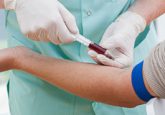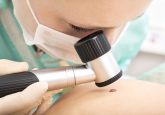Noninvasive method potentially as effective at measuring blood glucose as finger prick test

Researchers from the University of Missouri School of Medicine (MO, USA) and the Massachusetts Institute of Technology (MA, USA) have recently developed a noninvasive blood glucose monitor reported to be as effective as a finger prick test. This could be of interest to individuals living with diabetes for whom monitoring blood glucose levels is important for preventing the development of diabetes-related complications.
The device uses a technique called Raman spectroscopy to measure the chemical composition of skin and extract the amount of glucose from other skin compartments. A fiber optic cable attached to a wristband passes laser light onto the skin to detect different components. The shift in wavelengths associated with glucose present in the blood creates a molecular fingerprint that can be analyzed to determine blood glucose levels.
Co-author, Anandhi Upendran, Director of Biomedical Innovations at the University of Missouri School of Medicine Institute for Clinical and Translational Science, explained: “Currently, blood glucose levels are tested through a finger prick or intravenously. The approach we studied is noninvasive and uses a laser to monitor glucose levels in the skin. With diabetes on the rise, the development of an accurate, efficient and inexpensive alternative method to test blood glucose levels is an urgent clinical need.”
The team recently published the results of their experiment to test the effectiveness of their technology at monitoring blood glucose. 20 healthy participants had their blood glucose levels measured at intervals over a period of 160 minutes following drinking a glucose-rich drink. The participants’ blood glucose was measured using the spectroscopy technology, finger prick tests or IV blood tests. The researchers determined the spectroscopy method was as accurate at predicting blood glucose values as the finger prick test.
Jeon Woong Kang (Massachusetts Institute of Technology), co-author of the study, concluded: “This is a technology that we have been pioneering for more than 20 years. We know that handheld skin prick tests are not always accurate and may be uncomfortable for patients. The gold standard is intravenous blood testing, but frequent blood draws may not be an option for many patients. We were pleased to find that our initial results show Raman spectroscopy can measure glucose levels that are comparable to the finger stick devices. We hope that we can refine this method to be a noninvasive continuous glucose monitoring sensor.”
In the future, following further testing, the team hopes the spectroscopy technology could become an alternative method for blood glucose monitoring in the clinical setting and in other settings were the technology to become small enough to be portable. The team has also reported future studies will examine the accuracy of their technology with diabetic patients.
Sources: Singh SP, Mukherjee S, Galindo LH et al. Evaluation of accuracy dependence of Raman spectroscopic models on the ratio of calibration and validation points for non-invasive glucose sensing. Anal. Bioanal. Chem. 410(25), 6468–6475 (2018); https://phys.org/news/2018-10-effectiveness-noninvasive-blood-glucose.html





